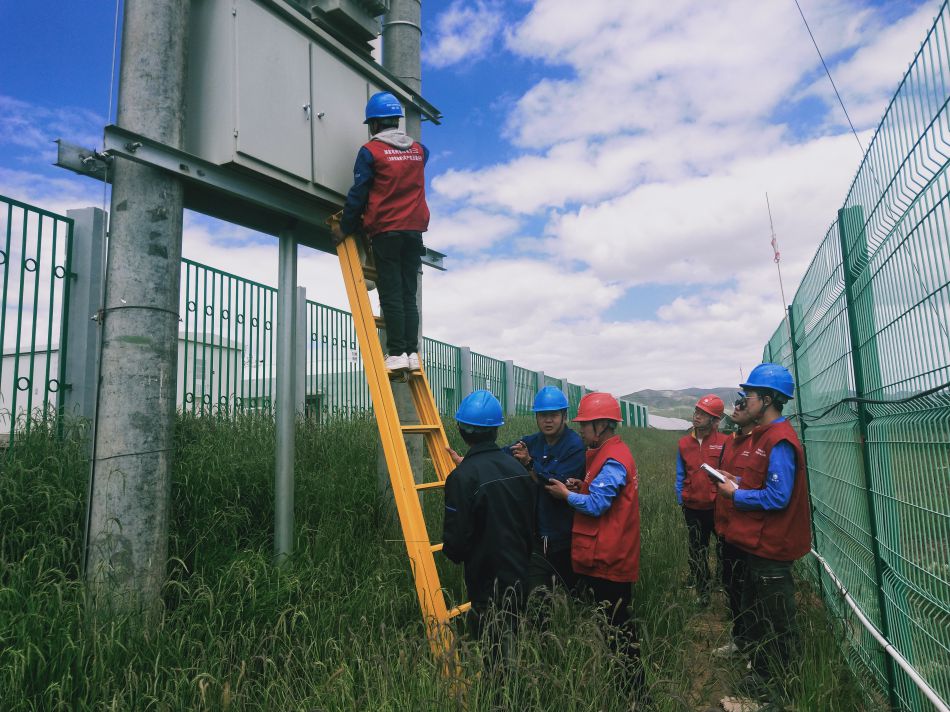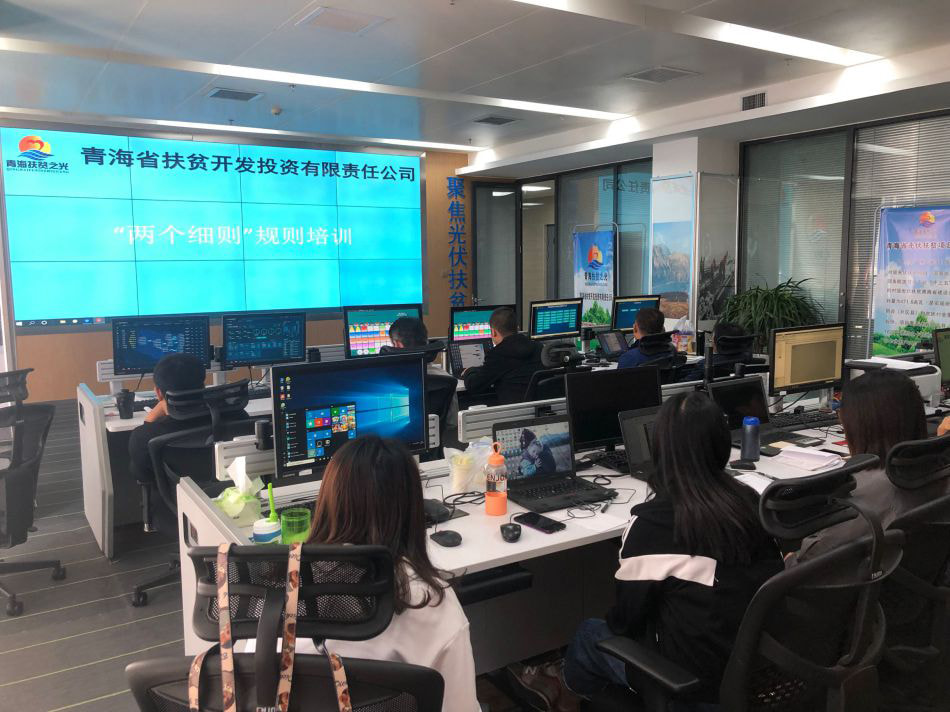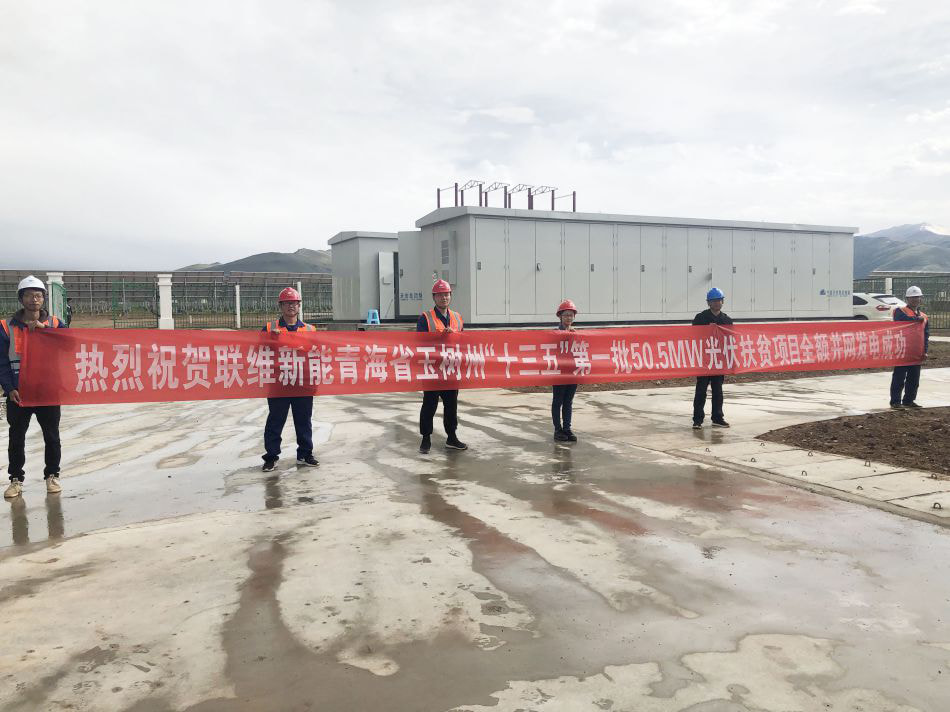

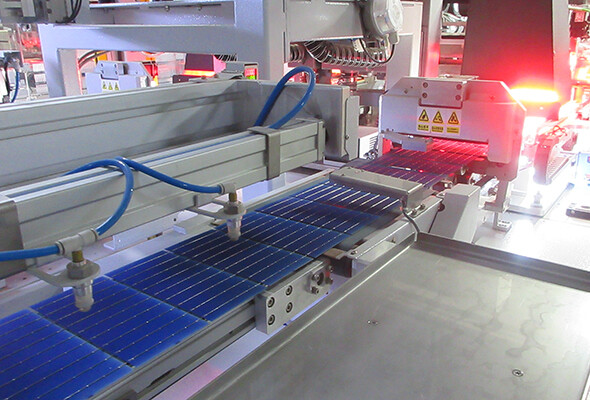
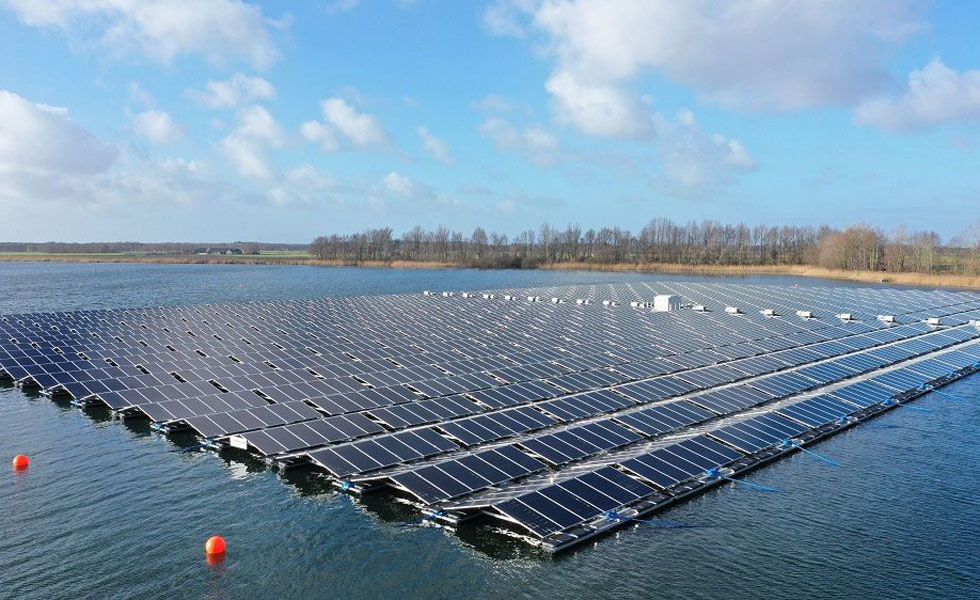
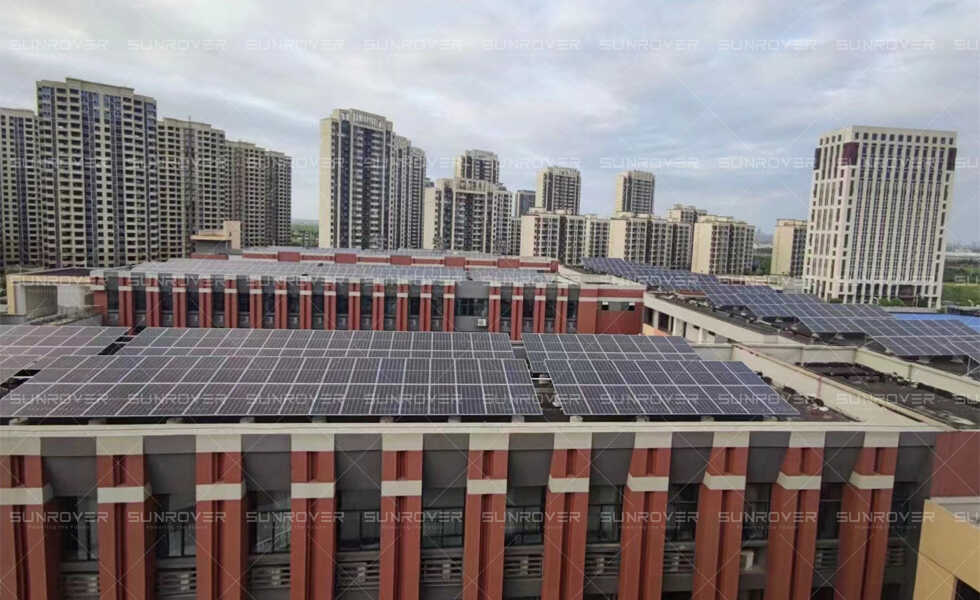
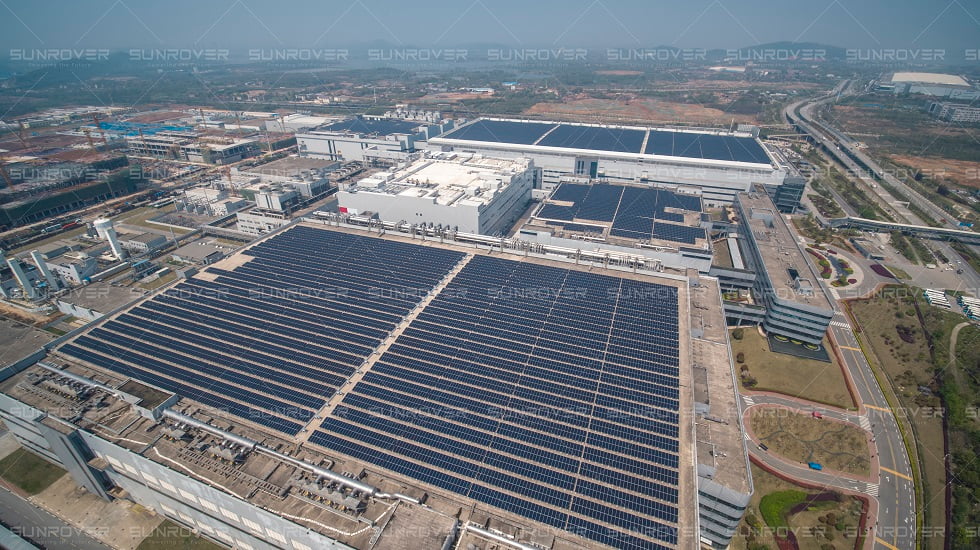
SUNROVER provides high-efficiency monocrystalline/polycrystalline solar panels, inverters, batteries and system-related accessories.
SUNROVER confirms the successful factory inspection, rigorous testing, and secure packaging of its latest 51.2V100AH/280AH lithium battery systems. These units are now en route to the port for global distribution, destined to power diverse customer applications worldwide. At SUNROVER, uncompromising quality and safety underpin every stage of production. Our advanced manufacturing facilities operate at significant scale, enabling high-volume output of reliable battery systems like the 51.2V series to consistently meet international demand. Each unit undergoes a stringent, multi-phase testing protocol before release. This includes exhaustive performance validation, extended cycle life testing, and critical safety assessments – such as overcharge, over-discharge, short-circuit, and thermal stability checks – ensuring inherent safety and long-term reliability for end-users across residential, commercial, and industrial settings. This commitment to excellence has fostered strong customer loyalty. SUNROVER batteries are increasingly recognized globally for their robust performance, durability, and safety, evidenced by repeated partnerships and positive feedback from a growing international client base. Customers choose SUNROVER for dependable energy storage they can trust. Beyond supplying premium batteries, SUNROVER excels in delivering comprehensive energy storage system solutions. Our engineering team possesses deep expertise in designing bespoke solar-plus-storage configurations. We collaborate directly with clients to develop optimized systems tailored precisely to their unique energy profiles, site specifications, and performance objectives. These integrated SUNROVER solutions ensure maximized energy capture, enhanced storage efficiency, and significantly more stable, consistent power generation, ultimately delivering superior operational reliability and return on investment. The dispatch of these 51.2V batteries underscores SUNROVER’s dedication to advancing sustainable energy through safe, high-capacity storage, robust manufacturing, and intelligent, client-focused system design.
Marking a significant achievement in distributed solar deployment, SUNROVER successfully commissioned its 2.95MW rooftop photovoltaic project, connecting it to the grid on June 24, 2025. This substantial installation exemplifies SUNROVER's robust capabilities, utilizing the company's own high-performance 700W N-type solar panels alongside Solis 250KW grid-tied inverters. Precise engineering resulted in the deployment of 4,214 SUNROVER panels and 12 Solis inverters to achieve the targeted 2.95MW capacity, ensuring maximum energy yield and seamless grid integration. The project's timely completion powerfully underscores SUNROVER's integrated manufacturing strength and turnkey project execution. SUNROVER operates a comprehensive, vertically integrated model, expertly managing every phase internally. This encompasses initial design consultation and feasibility studies, the in-house production of its advanced 700W N-type modules at scale, and culminating in efficient, professional on-site construction by dedicated project teams. This streamlined "one-stop" approach guarantees quality control, accelerates project timelines, and delivers significant value to clients. The proficiency of SUNROVER's specialized installation personnel in handling complex rooftop logistics and stringent grid compliance was crucial to the project's success. Beyond this large-scale installation, SUNROVER demonstrates exceptional versatility in crafting tailored energy solutions. The company excels in designing custom photovoltaic and integrated energy storage systems (ESS) to meet diverse client needs. SUNROVER’s expertise spans the entire spectrum, from small residential and commercial rooftop systems to expansive industrial and large-scale commercial storage applications, all designed to optimize energy independence and economic returns. To further enhance accessibility and support global deployments, SUNROVER provides comprehensive remote guidance and technical assistance throughout the installation and commissioning phases. The successful energization of this 2.95MW project solidifies SUNROVER's position as a premier, full-service provider capable of reliably delivering high-capacity, complex renewable energy projects from concept to grid connection.
June 18, 2025 – Marking a significant achievement in distributed renewable energy, the SUNROVER 892.8KW rooftop photovoltaic project successfully achieved grid connection today. This major installation showcases SUNROVER's comprehensive capability in delivering end-to-end solar and storage solutions, utilizing exclusively the company's proprietary technology: high-efficiency 600W N-type solar panels, robust 100KW hybrid inverters, and reliable 51.2V 200AH rack-mounted lithium batteries. The project's impressive scale is realized through the deployment of 1,488 SUNROVER 600W N-type solar panels. Power conversion and grid management are efficiently handled by nine SUNROVER 100KW hybrid grid inverters. For energy resilience and optimization, the system integrates a substantial battery energy storage system utilizing multiple SUNROVER 51.2V 200AH rack-mounted lithium battery units, providing a total usable storage capacity of 92.16 kWh. This configuration ensures the system can deliver up to 900KW of critical backup power during grid outages, safeguarding essential operations. Under normal conditions, the 92.16 kWh storage capacity effectively captures surplus solar generation for use during peak demand periods or lower sunlight. Projected to generate approximately 1,071,360 kilowatt-hours (kWh) of clean electricity annually, this system translates into substantial operational savings for the host facility. Based on prevailing commercial electricity rates, the annual savings are estimated to exceed $160,000, significantly offsetting energy costs while reducing the carbon footprint. The seamless execution of this project underscores SUNROVER's vertically integrated mastery. From the in-house manufacturing of premium panels, inverters, and batteries to expert system design, engineering, and meticulous installation, SUNROVER orchestrates the entire process. This holistic approach guarantees optimal compatibility, performance, and reliability, with systems meticulously engineered to meet precise client-specific requirements for both energy savings and security. SUNROVER's dedicated team of specialists provides comprehensive support, offering expert consultation to design and implement the ideal custom solar-plus-storage solution for any application. The successful commissioning of this 892.8KW project stands as a testament to SUNROVER's proficiency in delivering high-performance, fully integrated renewable energy systems that offer both economic advantage and energy independence.
SUNROVER has successfully commissioned a significant 282.27kW distributed rooftop photovoltaic project, now fully operational and feeding clean energy into the grid. This project exemplifies SUNROVER's integrated solution approach, utilizing their high-performance 600W N-type solar panels and reliable 50kW grid-tied inverters. The project's scale required approximately 471 SUNROVER 600W N-type solar panels to achieve the 282.27kW capacity. For efficient power conversion and grid integration, six SUNROVER 50kW inverters were deployed, forming the backbone of the system's electrical infrastructure. This clean energy installation is projected to make a substantial environmental impact, reducing annual CO2 emissions by an estimated 338 tons, along with significant cuts in other harmful pollutants like SO2 and NOx, contributing positively to local air quality and climate goals. Crucially, this project underscores SUNROVER's robust manufacturing foundation. The company operates high-volume production lines with ample capacity, ensuring consistent supply not only for demanding domestic projects like this one but also guaranteeing on-time fulfillment for its expanding international customer base. SUNROVER's efficient production and logistics systems are key to meeting global delivery commitments. Building on eleven years of proven experience in solar engineering and project execution, SUNROVER possesses deep technical knowledge across diverse applications. Their dedicated team of engineers and sales professionals works collaboratively with each client. This synergy allows SUNROVER to design and deliver truly bespoke solar and solar-plus-storage configurations, meticulously tailored to address specific energy requirements, site constraints, and financial objectives. SUNROVER continues to drive the adoption of sustainable energy solutions worldwide, leveraging its manufacturing strength and extensive expertise.
The SUNROVER 682.92KW rooftop distributed photovoltaic project has been successfully connected to the grid. This installation utilizes SUNROVER's high-efficiency 600W N-type solar panels paired with Solis 50KW grid-tied inverters to deliver reliable clean energy. The project comprises precisely 1,138 SUNROVER 600W solar panels to achieve its 682.92KW DC capacity. For optimal power conversion, fourteen Solis 50KW inverters were deployed, providing a total AC capacity of 700KW to efficiently manage the system output. Upon operation, the system is projected to generate approximately 819,500 kWh of clean electricity annually (based on 1,200 equivalent full-load hours). This translates into significant annual savings: roughly $81,950 in electricity costs (calculated at $0.10 per kWh) and avoidance of approximately 410 metric tons of carbon dioxide emissions (using a factor of 0.5 kg CO₂ per kWh). This successful implementation highlights SUNROVER's core expertise in designing and delivering custom-engineered solar and energy storage systems tailored to specific client requirements and site conditions. SUNROVER's approach focuses on optimizing the integration of panels, inverters, and batteries to maximize performance, return on investment, and energy resilience. The company further ensures seamless project execution through its professional installation and construction teams, who guarantee quality, safety, and timely grid connection. Complementing the technical delivery, SUNROVER's dedicated sales and support team provides comprehensive guidance throughout the entire project lifecycle, from initial feasibility and design to post-commissioning, effectively addressing client inquiries and resolving challenges. The grid connection of this 682.92KW project demonstrates SUNROVER's commitment to enabling businesses to reduce operational costs and achieve sustainability goals through expertly implemented, customized distributed solar solutions.
On July 7, the maximum power load of the Jiangsu power grid hit a new record high for the third time this year, reaching 152 million kilowatts. Just the night before, under the unified command of the power control center of State Grid Jiangsu Electric Power Co., Ltd., 93 new energy storage power stations in Jiangsu Province concentrated on discharging to the power grid during the evening power peak, with a maximum discharge power of 7.14 million kilowatts, realizing the largest-scale centralized call for new energy storage in my country, and testing the friendly interaction of all links of the new power system during the peak power consumption period in summer, and comprehensively improving my country's clean energy utilization level. What is new energy storage? Energy storage means "charging" when there is sufficient power generation from new energy sources such as wind power and photovoltaics, and "discharging" to the power grid or customers during peak power consumption or extreme scenarios. New energy storage, known as "super charger", generally refers to electric energy storage technology other than pumped storage, and is one of the regulatory means to cope with the many challenges brought by the construction of new power systems. In this centralized call for new energy storage, State Grid Jiangsu Electric Power, through a new generation of dispatching support system, issued discharge instructions to more than 7 million kilowatts of new energy storage at the same time during peak power consumption, which can meet the power demand of about 48 million households for one hour at the same time. In addition, during the peak of photovoltaic and wind power generation, the dispatching department issued charging instructions to the new energy storage power station, which can add a "super charger" that can store 14.5 million kWh of electricity to Jiangsu, and play its positive role in power supply and new energy consumption. Three new highs, 152 million kilowatts At present, continuous high temperature weather has occurred in many parts of my country, and the power grid load has continued to rise under the high temperature. On July 7, the maximum power load of the Jiangsu power grid has set a new record for the third time this year, reaching 152 million kilowatts. On the evening of the 6th, in order to support the evening peak power consumption of the power grid, State Grid Jiangsu Electric Power carried out the largest-scale centralized call-up of new energy storage in my country. A total of 64 grid-side energy storage and 29 power supply-side energy storage power stations participated in the centralized discharge, with a total participating capacity of 7.248 million kilowatts. The actual maximum call-up scale was 7.14 million kilowatts, following the centralized call-up of 4.55 million kilowatts of new energy storage last year, which once again broke the record of centralized call-up scale, an increase of 56.9% year-on-year. "Ti...
Recently, the largest "photovoltaic hydrogen storage integrated" offshore photovoltaic demonstration project in China, the first ecological governance type tidal flat photovoltaic demonstration project in China, the Guohua Rudong Photovoltaic Hydrogen Storage Integrated Project, which was designed and constructed by China Power Construction, was fully connected to the grid for power generation. The project is located in Rudong County, Nantong City, Jiangsu Province, and uses about 4,387.5 acres of tidal flats. The total installed capacity is 400,000 kilowatts, and supporting booster stations, energy storage facilities, and hydrogen production and refueling stations are built. The project has an average annual on-grid soalr system power of 462.934 million kWh. After completion and commissioning, it can reduce carbon dioxide emissions by about 309,400 tons per year, which is equivalent to adding 1.5 West Lake scenic areas of forest carbon sinks, which can effectively help local ecological environment protection and green and low-carbon development. It was designed by the East China Institute of China Power Construction and constructed by the Central South Institute. As the first tidal flat ecological governance photovoltaic project in China, it innovates the "offshore photovoltaic + grass control" ecological restoration model, takes the lead in the ecological governance of Spartina alterniflora, and creates a demonstration of green photovoltaic integration and ecological grass control in Jiangsu Province and the coastal areas of the country. During the construction process, the construction of the shore-based booster station and photovoltaic field area was affected by multiple factors such as the original mudflat terrain and on-site tidal changes, and the construction process was extremely difficult. The project team overcame difficulties and creatively used steel sheet pile cofferdams and well point dewatering to solve the construction problems of the shore-based station, designed a new type of aerial platform to solve the installation problems of the photovoltaic area, and used about 1,800 platform 4-wheeled carts according to local conditions to protect the local marine ecology and clam breeding areas. The first "river, sea, land, and river" intermodal transport solution was created to solve the problem of submarine cable transportation. On the vast mudflats of the Yellow Sea, nearly 700,000 photovoltaic panels "breathe" lightly with the rise and fall of the tide. Their annual power generation is as high as 468 million kWh, enough to light up the bright lights of 200,000 households. At the same time, the project will also drive the large-scale development of multiple industries such as offshore photovoltaics, energy storage and hydrogen energy, and improve and strengthen the local new energy industry chain.
Photovoltaic energy in Europe is undergoing a new change. Just recently, Finland announced a major event in the energy field. On April 1, the Finnish government announced that as the country's two energy companies gradually shut down all coal-fired power plants, Finland will completely stop using coal in energy production this spring. The Finnish government issued a communiqué saying that this move is a key step in Finland's energy transformation, four years ahead of the statutory deadline. Fossil fuel-based energy production will be replaced by low-carbon, clean, and renewable solutions in the future, and Finland will usher in a more stable, sustainable and climate-friendly energy system. The Finnish government has made it clear that future electricity production will focus on the development of wind power, nuclear power, hydropower and solar energy, and will be supplemented by electric boilers, heat pumps, energy storage and other technologies to build a new energy system. This strategy is highly consistent with Europe's overall carbon neutrality goal. According to the EU plan, renewable energy must account for 45% of terminal energy consumption in 2030, and photovoltaics are seen as the core tool to achieve this goal. Finland's practice has proved that the coordinated efforts of policy guidance and market mechanisms can greatly accelerate the process of clean energy substitution. It is understood that Finland's coal withdrawal action stems from the "2029 Coal Ban Act" passed in 2019. Through large-scale investment in wind power, nuclear power and bioenergy, Finland's coal-fired power share has dropped sharply from 8% in 2016 to less than 1% in 2025, while wind power generation has soared to 25%, driving 26 billion euros of green industrial investment. Although Finland's current photovoltaic installed capacity is limited, and the Nordic countries have a relatively low demand for photovoltaics due to the high proportion of hydropower, their energy transformation path reveals the future trend of the European market: the withdrawal of fossil energy will inevitably be accompanied by a diversified layout of renewable energy, and photovoltaics will play a key role in it. Finland "retires from coal", and the photovoltaic pattern is reshaped Finland has never stopped investing in renewable energy. Previously, the Finnish government had agreed to provide priority facilities for green transformation projects between 2023 and 2026. In early 2023, the Finnish government also adopted a new hydrogen strategy, setting a goal of producing 1 million tons of green hydrogen by 2030, accounting for one-tenth of the EU's total target of 10 million green hydrogen. In fact, compared with other European countries, Finland's electricity market appears to be quite "unstable". In the past few years, Finland's energy system has undergone a major transformation. With the construction of the 1.6 GW new Olkiluoto 3 nuclear power plant in April 2023, Finland's t...
It is reported that the European Commission recently launched three new European cooperation projects under the Horizon Europe program, aiming to consolidate the European continent's leading position in technology, enhance industrial resilience, and promote sustainable development. These initiatives will focus on the photovoltaic, advanced materials and textile industries, and it is expected that by 2030, the joint investment of the EU and the private sector will be close to 1.1 billion euros. Among them, the "European Photovoltaic Innovation Cooperation Project" aims to expand Europe's photovoltaic manufacturing capacity and build a more resilient supply chain, which is in line with the goals of the European Green Deal, the "RepowerEU Plan" and the 2023 Renewable Energy Directive. From 2025 to 2030, the EU and private partners will each invest up to 240 million euros to enhance Europe's position in the global solar market and reduce its dependence on fossil fuels.
On March 10, the Huaneng Wusha River Xiazhai photovoltaic power generation project was put into operation at full capacity. It is understood that the project is one of the 17 photovoltaic power generation projects registered by Huaneng Lancangjiang Hydropower Co., Ltd. in Xishuangbanna Prefecture, and is currently the largest photovoltaic power station in Xishuangbanna Prefecture. The project has an installed capacity of 150,000 kilowatts, covers an area of about 3,160 mu, and has a total of 48 photovoltaic arrays, about 305,000 high-efficiency bifacial solar panels installed, and a new 220 kV booster station and supporting power transmission and transformation system. The project is located in Wusha River Xiazhai, Manla Township, Yiwu Town, Mengla County. It has rich solar energy resources and high stability. It adopts the innovative model of "agricultural planting + photovoltaic power generation". The height difference between photovoltaic modules and the ground can be used for the second land use, effectively improving land utilization, reducing water evaporation, and helping to alleviate land desertification. Since the start of construction in August 2024, the project team has adapted to local conditions, overcome the construction difficulties in mountainous and hilly areas, and adopted the staggered operation mode of "dry season sprint + rainy season material preparation" to fully promote construction. The project uses the "grid + modular" management model, and more than 1,200 people at peak times simultaneously promote foundation pouring and component installation. In terms of environmental protection, the project team abandoned the traditional "opening" construction method and adopted the "little bee" drilling construction to avoid damage to vegetation outside the solar panel bracket. With the commissioning of this project, the installed capacity of Huaneng Xishuangbanna New Energy has reached 1.05 million kilowatts, accounting for 93.75% of the total installed capacity of new energy in the prefecture. After the project is put into operation, it can provide 200 million kilowatt-hours of clean electricity each year, which is equivalent to saving about 65,700 tons of standard coal and reducing carbon dioxide emissions by about 163,800 tons.
Sunrover Power Co., Ltd has become one of the world's leading power plant developers and component builders, with sales teams all over the world and products exported to more than 80 countries and regions such as Europe, America, South Africa and Southeast Asia,etc.
Provide help for global new energy development and construction, and at the same time provide better products for customers at home and abroad, win-win cooperation, mutual benefit and mutual benefit, and jointly provide strength for the development and construction of solar energy.
SUNROVER's shingled all-black 430W solar panels are packed in boxes and will be shipped to Norway soon! Contact us today and unlock the potential of solar power with Sunrover. E-mail:info@sunroverpv.com
2014
Years
500MW
Capacity
30+
Partners
80+
Countries

